After World War II, as early supersonic military aircraft were pushing the boundaries of flight, it seemed like a foregone conclusion that commercial aircraft would eventually fly faster than sound as the technology became better understood and more affordable. Indeed, by the 1960s the United States, Britain, France, and the Soviet Union all had plans to develop commercial transport aircraft capable flight beyond Mach 1 in various stages of development.
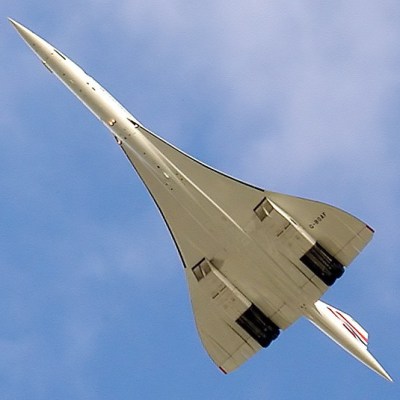
Yet today, the few examples of supersonic transport (SST) planes that actually ended up being built are in museums, and flight above Mach 1 is essentially the sole domain of the military. There’s an argument to be made that it’s one of the few areas of technological advancement where the state-of-the-art not only stopped moving forward, but actually slid backwards.
But that might finally be changing, at least in the United States. Both NASA and the private sector have been working towards a new generation of supersonic aircraft that address the key issues that plagued their predecessors, and a recent push by the White House aims to undo the regulatory roadblocks that have been on the books for more than fifty years.
The Concorde Scare
Those with even a passing knowledge of aviation history will of course be familiar with the Concorde. Jointly developed by France and Britain, the sleek aircraft has the distinction of being the only SST to achieve successful commercial operation — conducting nearly 50,000 flights between 1976 and 2003. With an average cruise speed of around Mach 2.02, it could fly up to 128 passengers from Paris to New York in just under three and a half hours.
But even before the first paying passengers climbed aboard, the Concorde put American aircraft companies such as Boeing and Lockheed into an absolute panic. It was clear that none of their SST designs could beat it to market, and there was a fear that the Concorde (and by extension, Europe) would dominate commercial supersonic flight. At least on paper, it seemed like the Concorde would quickly make subsonic long-range jetliners such as the Boeing 707 obsolete, at least for intercontinental routes. Around this time, the Soviet Union also started developing their own SST, the Tupolev Tu-144.
The perceived threat was so great that US aerospace companies started lobbying Congress to provide the funds necessary to develop an American supersonic airliner that was faster and could carry more passengers than the Concorde or Tu-144. In June of 1963, President Kennedy announced the creation of the National Supersonic Transport program during a speech at the US Air Force Academy. Four years later it was announced that Boeing’s 733-390 concept had been selected for production, and by the end of 1969, 26 airlines had put in reservations to purchase what was assumed to be the future of American air travel.
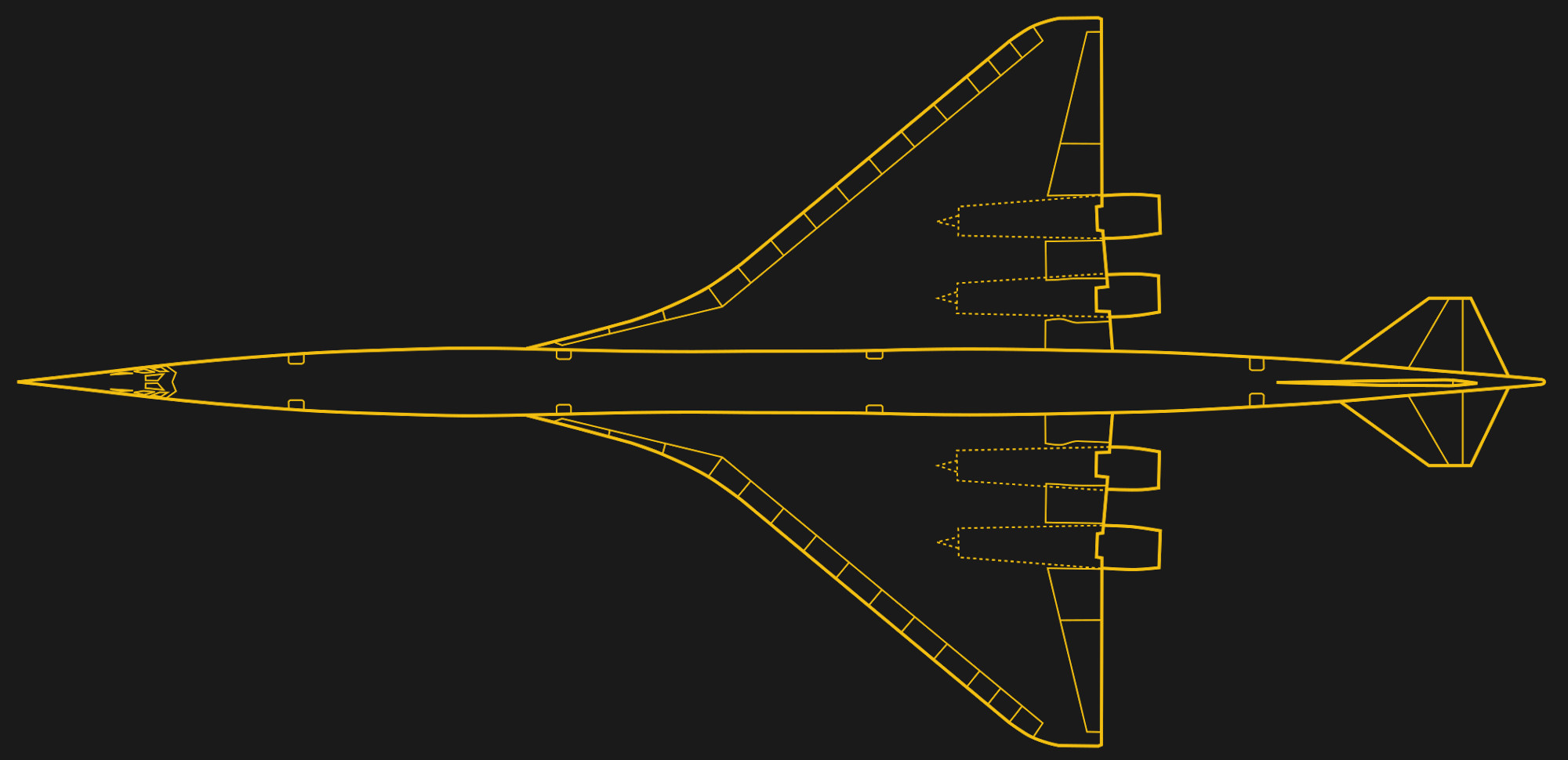
Even for a SST, the 733-390 was ambitious. It didn’t take long before Boeing started scaling back the design, first deleting the complex swing-wing mechanism for a fixed delta wing, before ultimately shrinking the entire aircraft. Even so, the redesigned aircraft (now known as the Model 2707-300) was expected to carry nearly twice as many passengers as the Concorde and travel at speeds up to Mach 3.
A Change in the Wind
But by the dawn of the 1970s it was clear that the Concorde, and the SST concept in general, wasn’t shaping up the way many in the industry expected. Even though it had yet to make its first commercial flight, demand for the Concorde among airlines was already slipping. It was initially predicted that the Concorde fleet would number as high as 350 by the 1980s, but by the time the aircraft was ready to start flying passengers, there were only 76 orders on the books.
Part of the problem was the immense cost overruns of the Concorde program, which lead to a higher sticker price on the aircraft than the airlines had initially expected. But there was also a growing concern over the viability of SSTs. A newer generation of airliners including the Boeing 747 could carry more passengers than ever, and were more fuel efficient than their predecessors. Most importantly, the public had become concerned with the idea of regular supersonic flights over their homes and communities, and imagined a future where thunderous sonic booms would crack overhead multiple times a day.
Although President Nixon supported the program, the Senate rejected any further government funding for an American SST in March of 1971. The final blow to America’s supersonic aspirations came in 1973, when the Federal Aviation Administration (FAA) enacted 14 CFR 91.817 “Civil Aircraft Sonic Boom” — prohibiting civilian flight beyond Mach 1 over the United States without prior authorization.
In the end, the SST revolution never happened. Just twenty Concorde aircraft were built, with Air France and British Airways being the only airlines that actually went through with their orders. Rather than taking over as the standard, supersonic air travel turned out to be a luxury that only a relatively few could afford.
The Silent Revolution
Since then, there have been sporadic attempts to develop a new class of civilian supersonic aircraft. But the most promising developments have only occurred in the last few years, as improved technology and advanced computer modeling has made it possible to create “low boom” supersonic aircraft. Such craft aren’t completely silent — rather than creating a single loud boom that can cause damage on the ground, they produce a series of much quieter thumps as they fly.
The Lockheed Martin X-59, developed in partnership with NASA, was designed to help explore this technology. Commercial companies such as Boom Supersonic are also developing their own takes on this concept, with eyes on eventually scaling the design up for passenger flights in the future.
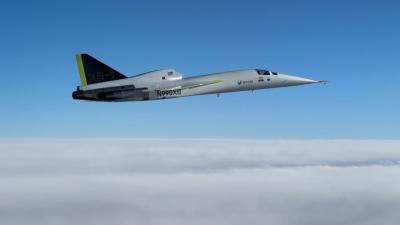
In light of these developments, on June 6th President Trump signed an Executive Order titled Leading the World in Supersonic Flight which directs the FAA to repeal 14 CFR 91.817 within 180 days. In its place, the FAA is to develop a noise-based certification standard which will “define acceptable noise thresholds for takeoff, landing, and en-route supersonic operation based on operational testing and research, development, testing, and evaluation (RDT&E) data” rather than simply imposing a specific “speed limit” in the sky.
This is important, as the design of the individual aircraft as well as the environmental variables involved in the “Mach Cutoff” effect mean that there’s really no set speed at which supersonic flight becomes too loud for observers on the ground. The data the FAA will collect from these new breed of aircraft will be key in establishing reasonable noise standards which can protect the public interest without unnecessarily hindering the development of civilian supersonic aircraft.

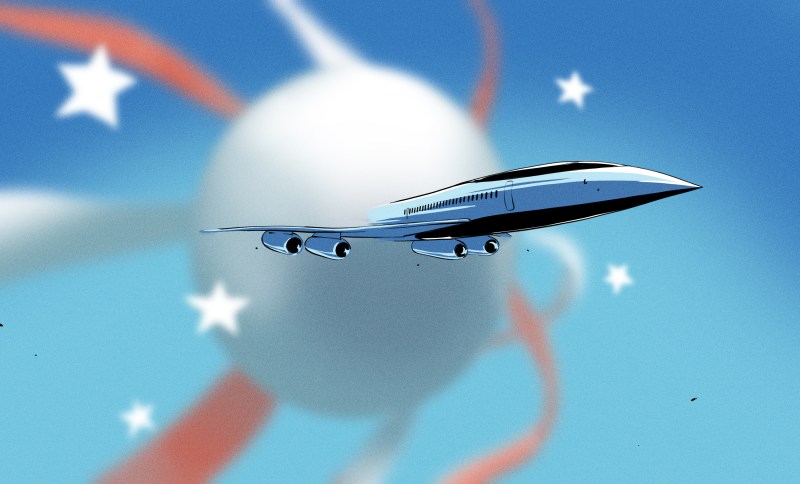
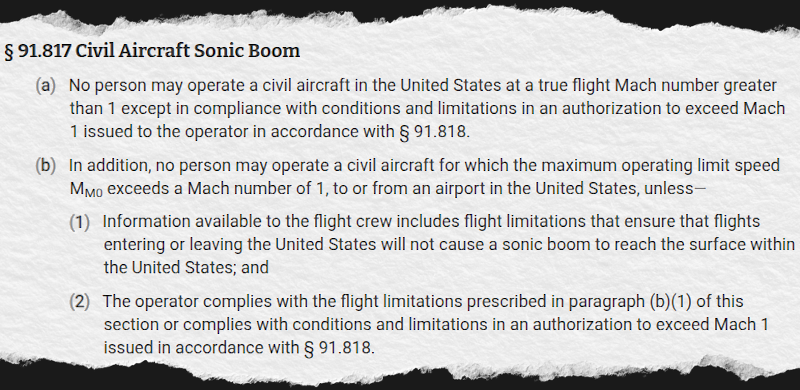














The boom was one thing, but man, making a het (especially with that capacity) exceed certain speed also guzzles whatever fuel you put in. The numbers just don’t add up anymore, except to maybe unnecessarily shuttle around a small amount of excessively rich people. I think at this point we should be addressing other things.
Airplanes like this fuel innovation. Trying to make an aircraft so fast and so aerodynamic means that other airplanes will become better, more efficient as a result. All the tricks they learned will end up being used in creating new planes. The engine technology used is incredible, the shape, the everything. Before the accident, people were willing to pay the high price of a ticket, which means that it does add up. As long as it’s not tax payer subsidized, it’s not important at all what they do. If it is tax payer subsidized, shut it down, regardless of what it is as that shouldn’t exist in the first place. The government should not be in the business of picking winners and losers.
The government is going to take your money no matter what or how many times you say no; this is at least one of the better things they can spend it on.
Every government on earth has problems with getting their operations in order. But subsidies directly hurt everyone. It’s throwing away money they don’t have, on making things more expensive. It’s the most insane thing ever. I remember a few years ago when several car companies received a 3000 subsidie on electric cars. The same week, those car manufacturers all bumped the price by 3000 dollars. The only thing that happened for the consumer was that second hand prices just became much higher, which is a net negative, and it’s a huge waste of tax money.
Subsidies are the most insane thing ever.
For most of it’s life, Concorde payed it’s own running costs.
The government subsidy was a sunk cost.
Was a national pride thing.
Concord was paid for by the French and British governments.
Boeing airliner development mostly paid for by US government.
Airbus A320, which enabled all the low cost airlines, paid for by various governments.
Leaving aside government domination of the aircraft industry- can’t forget airports look at some other areas.
Government roads and highways are a total waste of money?
Speaking of waste, government sewers, can you believe that taxpayers literally pay for that shit?
Railroads, in the western united states and most countries, paid for by the government.
Of course lots of people complain about subsidies, mainly because they drive prices down. The rest of the world can’t seem to compete with low Chinese prices and blames government subsidies.
The government literally picks winners and losers every day. Anything a government decides to do is likely to impact some other group negatively. The recent US budget gave huge tax breaks to the wealthy, at the cost of health care for millions. No winners or losers there.
The government shouldn’t do all that much if it was run properly. What what you said after that makes no sense. Now I’m not American but I read a lot about the BBB and read large parts of it, and it’s designed to give the biggest tax breaks to poor people. I don’t know any wealthy people that survive on tips and overtime. And no Americans or immigrants will lose healthcare. Only illegals, freeing up money to be used on Americans and immigrants. I can give you tons of reasons why I don’t like it (for example, increasing the deficit, expanding surveillance, keeping coercive spending, etc), but that doesn’t have anything to do with what you said.
Maybe you need to read some more news from neutral sources as your news sources seem to be giving you very incorrect information. Maybe use allsides or ground news.
But what this has to do with subsidies or airplanes, I have no idea.
Working “illegals “ pay just as much in taxes as anyone else.
They don’t get as much benefit from those taxes though.
Need an edit button on comments
The tax breaks mostly go to rich people. Lots of people will lose insurance. Most people working for tips would rather have health insurance and get paid by their employer.
Also the tax cut on tips is really justification for a tax cut on gifts, because for some reason tips are seen as voluntary gifts, and the rich transfer wealth through gifts more than other people.
No, illegals don’t pay taxes like everyone else.
IF taxes are withheld, they take claim 10 dependents on their W-4, knowing they will never have to makeup the shortage.
Mostly they work in the cash economy.
Aside: No tax on tips?
Since when have tipped employees accurately reported cash tips?
Or anybody else earning cash?
Even when paying with CC, I always tip in cash.
No tax on tips is just realpolitik!
We’re Americans, not GD law abiders.
We’re NOT Swiss.
Why? Any actual reason beyond some ideology?
Because as far as I can seen, if “the government” or any other organisation is being run properly, it should be getting a lot done. If it doesn’t do much, it’s hard to see how it is being run properly.
every development cross polinates with other developments…but supersonic is kind of niche. the aerodynamic problems are unique to supersonic travel. if you invest the effort to make something quiet or efficient in the supersonic regime, it isn’t going to have much application to regular subsonic jets.
The day I see somebody come up with a real 7 billion dollar infusion I will believe it’s all about economics the science is doable
Bad slow planes so sad, need to get to my golf course much faster, boom!
Preach.
And if we’re going to grant billionaires the boon of legal supersonic private jet flight between their vacation houses, we should ask for something in return.
I.E. a tax on supersonic flight which is inversely proportional to the number of passengers, to subsidize childcare and affordable housing.
It seems private business aircraft seem to “trigger” a certain portion of the population.
PJDS (Private Jet Derangement Syndrome).
Jealousy of success is exponentially proportional to one’s slacker quotient.
The more you are a lazy SOB, the more jealousy you have of others success.
Perhaps you haters should cease being envious of others (one of the 7
deadly sins), and strive to achieve that level of success that “zillionaires”
have achieved (hint: they didn’t get there sitting in mommy’s basement
hating on others – instead, other people’s success were role models to
motivate them to achieve).
Concorde was a work of art – it drew crowds everywhere it went – people
would be in awe of the timeless beauty of it’s shape – and the enormous
power of it’s engines on full afterburner.
Oh, and by the way, the “virtue signalling” phonies, perhaps you should
all give your hard earned money to a deserving slacker.
I own a 155′ yacht and make no apologies for it. I busted my ass since I
was 16 (now 75) and employ thousands of people in my business, and I’m
one of those people that own a private jet. I make no apologies for it.
What have you done/accomplished ? (besides “hate” on people more
successful than yourself).
“I own a 155′ yacht and make no apologies for it. I busted my ass since I
was 16 (now 75) and employ thousands of people in my business, and I’m
one of those people that own a private jet. I make no apologies for it.”
Sure you do.
https://www.oxfam.org/en/press-releases/richest-1-emit-much-planet-heating-pollution-two-thirds-humanity
From one self-made multimillionaire to another: the American system only works if the lower class believe they have some viable route to the upper class. This route has shrunk smaller and smaller over your lifetime, to the point where an American is now 4x less likely to do it than a Canadian.
We must provide our poor either a the dream of future success, or subsidize their current standard of living. Right now America is doing worse than our peers on BOTH of those fronts which is an almost guaranteed recipe for violence.
How ?
There are no “barriers of entry” to anyone who has a modicum of creativity.
All one needs to do is go online on a certain website highlighting stories of success.
People who have become members (or on their way to) of the “zillionaires” club.
The great thing about capitalism here in America, is anyone can succeed with
enough motivation and drive. Many successful business people are testimonials to the old adage of “if at first you don’t succeed”. They never quit. That’s what separates them from the 99% of the losers (same thing with the “elite” military units – they do NOT quit, the mission is their raison d’etre… complete the mission at all costs).
The Bible still calls envy a sin. As one evangelical dictionary puts it, envy is the “sin of jealousy over the blessings and achievements of others.”
Key word “ACHIEVEMENTS”…. successful people usually put in extensive effort to achieve their level of accomplishments – vs – the “keyboard warriors” with no life, who spend all their time commenting on message boards about how rich people suck (never mind the hypocrisy of trying to design a product to become rich).
An extreme case of motivation (albeit on the wrong end of the law) of how American capitalism can work to the benefit of anyone (even right off the boat) – none other than Scarface…. Tony Montana…. zillionaire… for a short time…you need someone like him! you need someone to point a finger at, and call him the bad guy…. well say goodnight to the bad guy!
Why would the millionaires in congress want this?
“I.E. a tax on supersonic flight”
Not a bad idea. If the tax is proportional to the discomfort caused by the noise. So no sonic boom during the night allowed and higher tax when flying over/near residential areas.
“which is inversely proportional to the number of passengers”
Number of passengers should not be a factor. Number of people disturbed by the noise.
“to subsidize childcare and affordable housing”
Subsidizing affordable housing is an oxymoron. Better spend the money on adding walls near highways that reduce noise or something. That way causing noise will require you to pay for measures that reduce noise elsewhere.
The free market is the answer to most housing problems. It will not get the homeless guys off my street though.
For an example of a social housing that has been extremely successful, see Vienna. They built housing for a large fraction of their residents by taxing luxury goods.
https://www.theguardian.com/lifeandstyle/2024/jan/10/the-social-housing-secret-how-vienna-became-the-worlds-most-livable-city
The lengths America will go to to avoid making high speed rail is quite incredible. For all the money spent on trying to make supersonic transport workable over built up areas, we probably could’ve already had a 350kph+ HSR network covering the major metropolitan areas on the coasts and the Midwest.
To be fair high speed rail doesn’t cross oceans. And supersonic passenger jets are likely to be used for longer trips than the typical HSR link.
Now you have me dreaming about a tunnel running from the US to the EU.
Make it for high speed freight (since human passengers would be too risky to start) with tons of tracks. Co-run it with fiber optic lines and even link power grids via super conductors or super HV cables.
Now we have less cargo ships, faster cargo shipping, an internet line less likely to get cut, and if the power grids are linked solar storage is easier because sunny areas can export to night areas.
Superconducting cables made of unicorn horn and rainbows!
The secret being that Leprechaun farts are catalytic.
Far easier to put one from West Yukon to Uelen and down to the US friends in Vladivostok and Pyongyang. We can call it “The Axis”
True, but you also wouldn’t be worried about noise for transatlantic routes, and those were by and large eliminated for economic reasons years ago. The reality is that more customers are willing to pay more for luxury seats (where most of the profit is) than to go faster.
The marginal argument for supersonic transports is cross country routes like LAX NYC, which are too far for HSR. Yet these don’t represent the majority of domestic flights; the average flight is 600-800 miles depending on the carrier, well within competitive reach of modern HSR. I don’t understand why anyone would want to spend any money on such a niche use case product that lost out economically decades ago, especially in a world where increased usage of fuel is a fatal liability.
America had pretty good passenger rail until a certain point in time
We have an extensive rail infrastructure, but it’s primarily geared for freight these days. Wouldn’t mind seeing HSR as medium-distance travel option in my state, but as with most public transit, it would probably turn into another money pit vs. something that could break even.
Extensive? Maybe, in as much as it reaches most of your cities. It’s not well connected though, even if you had regular passenger trains on the existing rails the routing is stupid for many pretty normal inter-city journeys.
The routing is smart for rail freight purposes.
Because rail bridges are very expensive, you can really only optimize for freight or passenger.
Straight line routes don’t exist in Europe either.
By any sane metric American freight rail is better than Europe’s.
LA to NYC is 2446 miles (3936km), So youre looking at ~11.5hrs if your HSR runs nonstop service (unlikely). A regular 747 flight between the two is only ~6 hours, At mach 3 it would only take about an hour. HSR and Supersonic planes are not competing with each other, They service entirely different transport needs.
What people get wrong about HSR is that it is never about sheer speed, but it is speed and capacity. Build a dedicated HSR, you not only get fast transport, but also something that runs at high frequency Take the Japanese Shinkansen system. It links the major cities at a speed where daily commute times are acceptable, but run every 15min, which means you have a high speed conveyer belt. However fast air transport is, you still have the problem that airports are a distance from the city centers, you need to add arrival times and time to get out and you have limited landing slots.
OK at a certain point air travel wins, when there is a certain distance between points, but there are plenty of cases even in the US where a high speed train would be then quickest, most efficient way to transport people, however fast the plane bit can go.
An 16 car Shinkansen bullet train has roughly 2X the passenger capacity of a 747. How many LA to NYC daily commuters do you think there are in need of high speed rail service that takes twice as long as a 747 or nearly 12X the time of the Mach 3 jet discussed here.
Other than the shuttling people up and down the east coast where amtrak operates Acela and the NEC 120+mph trains. Tthe US just doesnt have the sort of centralized economy that requires or would benefit significantly from HSR. Americans dont commute several hundred miles to work, we move to within 50-100 miles of our employment.
Like I said “”They service entirely different transport needs.”
With how often this is brought up you’d think that this path was the most important flight in the United States, rather than about 5% of the yearly domestic flights. Turning it around, why should we sink public funds and create noise pollution to serve such a small number of flights?
The median flight distance in the U.S. is about 700 miles, trivially within the reach of the HSR network China is building out today (planned speed of ~250mph). And the death of the Concorde showed that more people were willing to pay for comfort than speed, so why tolerate all the pollution for something that’s only viable on a minority of routes, and inferior in every other metric to what our peer states are building?
How many flights in the median journey?
Median journey length?
WTF difference does flight distance make?
That’s a talking point from somewhere, that place is intentionally deceptive.
I’d guess the median # of flights is 2…perhaps mean would be more useful here.
Journey length well above 1000 miles.
Europeans have no idea how GD big America is.
California is the size of Germany, half Germany’s pop, much more wilderness, bigger cities.
CA HSR is typical CA disaster.
Bottomless money pit.
Usual suspects feasting.
Billionaires do not want to sit in a train.
Why is the country who wrote “We the people…” now ruled by kings?
Derp!
Putin does.
Problem with rail is that it normally involves taking land involuntarily
That’s what the Boring company and Hyperloop are all about fixing to make rail travel in a tube super duper you’ve never seen better faster fast.
sarcasm mode off
Wait until you hear about how highways and airports are made.
Airports are local government cash cows!
Suburbs extort a payment from core city airport operators by threatening to open their own airport.
Usually on the other side of town, as most cities bought the cheapest land available when siting their expansion airport (far from $ people).
But only if they have room for an airport, landlocked ‘burbs are laughed out of room.
Roads are a necessary thing.
Thousands of years.
Grew organically from trails.
Safe travel recent innovation.
Still road pirates, but now with badges.
Cops steal more then burglars, are now less trusted.
Fact, yearly ‘Civil Asset Forfeiture’ exceeds ‘Loss to burglary’, has for years.
An ecological aberration…
Americans trying to improve an French/British technology?
I wonder if it will be similar in terms of performance to the “Russian Concorde”, the Tupolev Tu-144. ;)
https://simple.m.wikipedia.org/wiki/Tupolev_Tu-144
My father took me to the Paris Air Show in 1973. I remember seeing the Tu-144 in flight the day before it crashed.
And also Concorde prototypes 001 and 002 in a group flight.
Which nation do you think has the most hours operating large supersonic aircraft?
Before you answer, look up ‘pilot training flight hours/year’ for each nation’s military.
Consider if scrapping the American SST program was the right choice, in hindsight.
You can count the Brits and Frogs as one nation. (serpentine runs for web site exit).